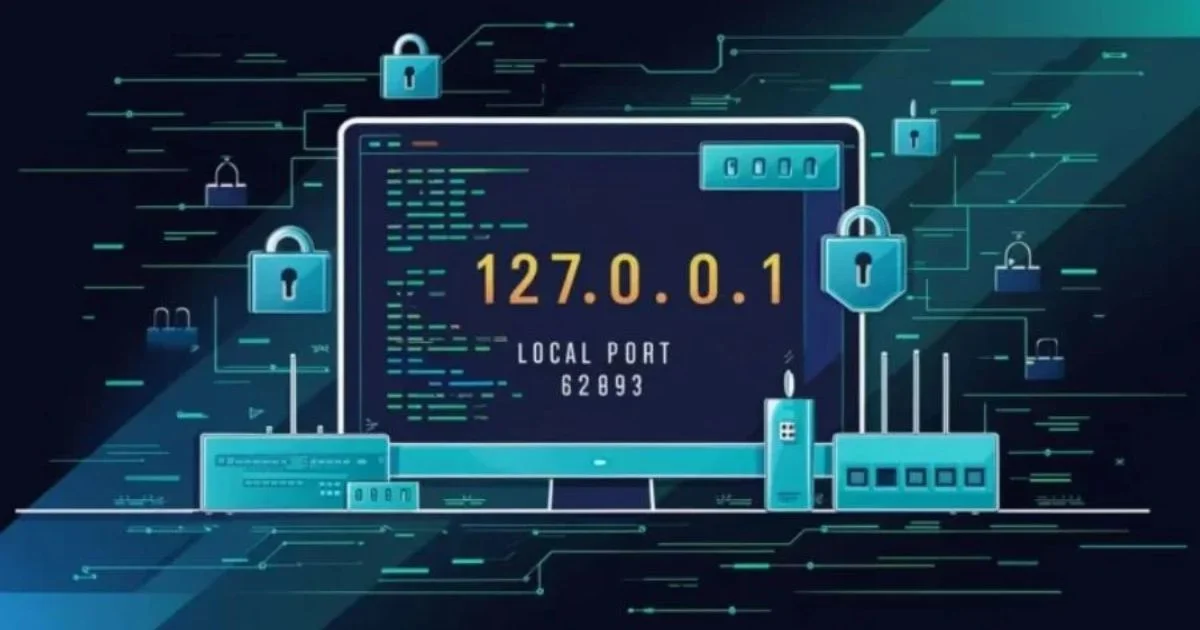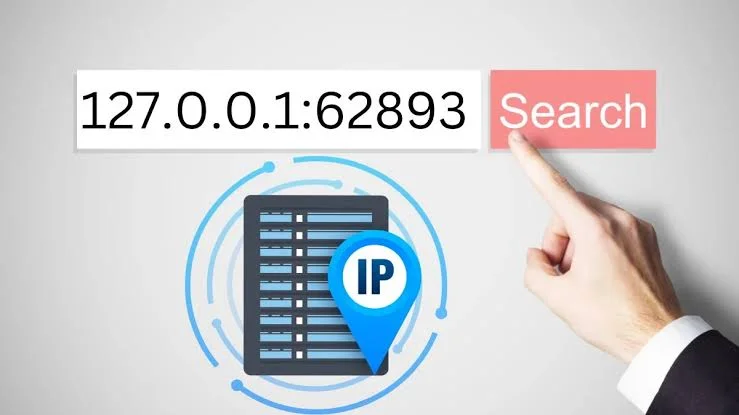When you’re diving deep into networking, understanding IP addresses and port numbers is essential. One such example that often confuses people, especially those new to networking or working with localhost servers, is the combination 127.0.0.1:62893. In this detailed blog post, we’ll explore everything you need to know about 127.0.0.1:62893, and answer the most common questions related to this port number and its significance in networking.
What is 127.0.0.1:62893 Port Number?
To understand 127.0.0.1:62893, let’s break it down into two parts:
- 127.0.0.1: This is known as the loopback address or localhost. It’s an IP address reserved for the machine you are currently working on, allowing it to communicate with itself. In simpler terms, when your computer uses 127.0.0.1, it’s sending data internally, without involving the internet or any external devices.
- 62893: This is the port number, which helps route the data to a specific application or service running on the device. Port numbers are used to differentiate between different services, allowing multiple services to run simultaneously on the same machine without interfering with each other.
In this case, 127.0.0.1:62893 refers to a specific service or process running on your local machine that has been assigned port 62893.
Understanding 127.0.0.1 Port 62893
To dig deeper into 127.0.0.1 port 62893, it’s essential to understand the function of localhost and port numbers.
- 127.0.0.1 (localhost) refers to your machine. It’s the equivalent of saying “me” or “my computer” in networking terms. Whether you’re running a local web server, a database, or a testing environment, communications sent to 127.0.0.1 remain internal.
- Port 62893 is simply a unique identifier for the communication session. Just like a post office address with an apartment number, the port ensures that the data reaches the right service. When your computer sends data to port 62893, it’s typically directed to a process that’s configured to listen on that port.
In practice, 127.0.0.1:62893 might refer to a database application, a custom service, or a temporary connection, often dynamically assigned by the operating system.
What Does Port 62893 Mean in Networking?
The port number 62893 is a part of the dynamic (ephemeral) port range, which spans from 49152 to 65535. These ports are used for temporary or client-side communication rather than being reserved for a particular service (like 80 for HTTP or 443 for HTTPS).
When your computer connects to an external service or even internally to another process, it often uses a dynamic port number like 62893. This means that the port is not fixed, and it can vary depending on the application and its requirements.
Port 62893 does not have a well-known, predefined purpose. It’s part of a range that allows your machine to dynamically assign ports for short-term, non-standard purposes, such as:
- Client connections to a remote server.
- Internal services or communication between applications running on the same machine.
- Temporary network connections during software installation or updates.
How to Identify Port 62893 on Localhost
If you want to identify which process or application is using port 62893 on your local machine, you can do so using built-in tools depending on your operating system.
On Windows:
1. Open Command Prompt as Administrator.
2. Type the following command to find which application is using port 62893:
netstat -ano | findstr :62893
3. This will return a line with information, including the Process ID (PID).
4. Next, run this command to find the specific application:
bash
tasklist /fi "PID eq <PID_number>"
On Linux/macOS:
- Open Terminal.
- Run the following command to check which process is using port 62893:cssCopy code
sudo lsof -i :62893 - This will show you the process name and its PID.
Is Port 62893 Safe to Use?
Port 62893, being within the dynamic port range, is commonly used for temporary or short-lived connections. It’s not inherently dangerous to use. However, as with any open port, there are some security considerations:
- Application Security: The real question about safety pertains to the application or service using the port. If a malicious application is using this port, it could potentially expose your machine to security risks.
- Firewall Settings: You can enhance security by ensuring that your firewall is configured to block unwanted incoming or outgoing traffic, especially on ports that are not actively in use.
- Port Scanning: If you’re using a port like 62893 in a publicly accessible environment, it could be scanned by attackers looking for vulnerabilities in services running on that port. It’s a good idea to monitor and protect dynamic ports that are exposed.
Overall, port 62893 itself is just a number, and its safety depends on the specific services and security measures you have in place on your system.
How to Check Which Process is Using Port 62893
As mentioned earlier, you can check which process is using port 62893 by using system utilities. These tools will help you identify the PID (process ID), which you can then look up to find the name of the application using that port.
On Windows:
- Use netstat and tasklist commands as outlined above.
On Linux and macOS:
- Use lsof or netstat to check which process is listening on port 62893.
These steps can help you diagnose issues, troubleshoot errors, or identify which applications are responsible for network traffic on a given port.
What Does 127.0.0.1:62893 Indicate?
When you encounter 127.0.0.1:62893, it typically indicates:
- Localhost Communication: It means the connection is occurring within your own machine. The data doesn’t leave the device; instead, it’s being routed internally.
- Temporary Service: If you see this port being used dynamically, it usually means the application is requesting a temporary port for a specific task or session.
- A Running Application: It could refer to an application or service running on your computer, which is bound to that particular port to handle network communication, even if it’s a temporary connection.
Dynamic Port Numbers Explained
Dynamic ports, also known as ephemeral ports, are used for short-lived communications. These are allocated automatically by the operating system whenever an application needs an available port.
The dynamic port range starts from 49152 to 65535, and the operating system assigns a free port from this range whenever an application requests a connection.
For instance:
- When you use a web browser, your computer uses a dynamic port to initiate the connection to a web server.
- When a database needs to connect to another service, it may request a dynamic port for communication.
Troubleshooting 127.0.0.1 Port 62893
If you’re having trouble with a service that uses 127.0.0.1:62893, there are several steps you can take to troubleshoot the issue:
- Check for Port Conflicts: Ensure no other process is using the same port. This could be causing the service to fail or behave unexpectedly.
- Check Application Logs: The application using this port may have its own log files that can provide additional context on what’s happening.
- Firewall Configuration: Verify that your firewall settings are allowing traffic to and from port 62893 if the service requires external communication.
- Service Restart: Restart the service or the application that is using port 62893 to resolve issues that could arise from temporary glitches.
- Use Diagnostic Tools: Use tools like netstat or lsof to check the state of the port, and verify whether it’s in a LISTEN state, or if it’s being actively used.
Common Uses of Dynamic Port 62893
While port 62893 itself doesn’t serve a specific, universal function, dynamic ports in this range are commonly used for the following:
- Web Browsing: When you connect to a website, your browser might use a dynamic port like 62893 for the outgoing request.
- Database Connections: Applications like MySQL or PostgreSQL often use dynamic ports for internal communications or when connecting to other instances of the database.
- Peer-to-Peer Applications: Services like file-sharing tools or gaming platforms that need temporary connections often use dynamic ports to facilitate these interactions.
- Software Updates: Many applications use dynamic ports to connect to external servers for updates or patches.
Conclusion
Understanding 127.0.0.1:62893 and port numbers in general is crucial for anyone working with network configurations, debugging, or managing internal services. The combination of IP addresses and ports allows computers to send data to the correct application or service.
Dynamic ports like 62893 are used for temporary communications, but ensuring they are configured properly and secured is essential for maintaining a safe and functional system.












